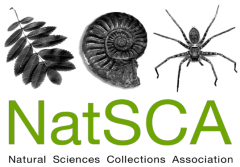21st century technology offers a powerful way to virtually explore the great diversity of habitats and landscapes of our planet, including its most remote regions. However, natural science collections provide a unique connection to the organisms themselves that live within those habitats and complex ecosystems. This paper describes a novel approach through using a combination of collections, digital technology and artwork to inspire an understanding of biodiversity, and in particular pollinators such as bees. We worked with Suffolk Family Carers clients, aged 9-12. We explored a range of habitats using satellite images, focusing on the local agricultural landscapes of Suffolk and which aspects of these environments would be most conducive to bee diversity. The young people created individual two-dimensional artworks and then a three-dimensional group artwork of their ideal bee environment. Much of their understanding of the key concept, biodiversity, however, seemed to stem from their physical experience through the main natural science gallery where they could explore the diversity of nature through taxonomic and diorama displays. This study highlights that even though digital technology offers a powerful vehicle for engaging young people, we should not forget the importance of using museum specimens to connect with the natural world.
Journal Article
-
One Earth one future: A new approach to inspiring biodiversity, through artwork, digital technology and museum specimensJournal of Natural Science Collections, Volume 11, pages 98 - 107Keywords: Collections, specimens, biodiversity, digital, satellite, bees, artwork, community, co-creation
